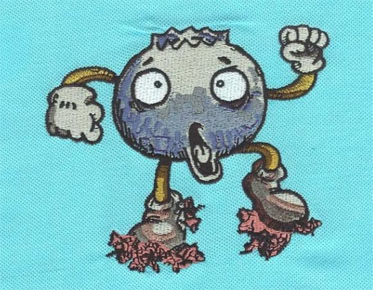A Quick Guide from Eagle Digitizing to Machine Embroidery Hooping
Hooping for embroidery will depend on a number of factors. Before you begin, you'll need to check your type of machine, as each hooping method is unique. Select the right hoop size and shape based on your machine and materials. Learn proper technique and tips from Eagle Digitizing for using hoops on an embroidery machine.
Step 1: Prepare your fabric and hoop
Hold the fabric to be embroidered and
fold it in half. Pinch the center of the material to feel its thickness as you
fold it. Doing so will provide a visual line to guide your placement between
the two halves of the hoop.
Next, loosen or tighten the hoop,
leaving enough space between each side to match the size of the folded fabric.
Pre-adjusting the hoop reduces the chance of the hoop burning on the material.
Step 2: Hoop the fabric
Place the bottom half of the hoop on
the table and place the adjustable corners or sides opposite you. Place the
stabilizer and fabric on the bottom half, then quickly push down the half so
that it is firmly inserted into the bottom. Gently pull out the protruding
material to adjust correctly, then tighten the hoop.
Step 3: Embroider your fabric
At this point, you can now place the
hoop stabilizer and fabric into the embroidery machine. If used correctly, you
should see a clean, problem-free embroidery design.
Hoop technique
Tip 1: Choose the right size
When choosing hoop size, measure your
embroidery pattern and increase its width and height by about an inch. Too
large a hoop may produce an adverse embroidery effect.
Tip 2: Knitted fabric in rectangular
hoop
Embroidery machine hoops sometimes
resemble rectangles rather than circles. Increase the chances of beautiful
embroidery by using a T-pin around a straight edge, tightening the material and
preventing movement.
Tip 3: Use double-sided tape to make flexible
or transparent materials
Using silky, stretchy fabrics often
results in wrinkled or twisted designs. Place double-sided tape inside the hoop
to reduce movement and distortion.
Tip 4: Choose your preferred
embroidery stabilizer
You can choose from three types of
stabilizer materials:
Cut off: stable and durable, after
embroidery can cut off the redundant back.
Tear off: Useful for more stable
materials, a removable stabilizer allows you to tear off embroidery backing.
Water soluble: Once submerged in
water, this backing dissolves and leaves the embroidery design behind.
Fusible: Similar to the stability of
cut materials, fusible stabilizers are ironed and left in the garment after
embroidery.
Float with hoop embroidery
Floating embroidery uses a piece of
stabilizer as a base to attach the fabric without placing the material in a
hoop. You can better control this form of embroidery with the following tips:
The flaking stitch around the edge of
the fabric prevents it from moving on the stabilizer.
Use an adhesive spray to hold the
material in place.
Place dowel pins or tape around the
outer edge of the material.
When you have mastered the embroidery
hoop, you need professional embroidery design. Eagle Digitizing has been
digitizing high-quality embroidery files for over 20 years. Contact us now for
quick and accurate quotes or by using our online contact form.


